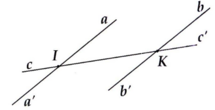Read the following passage and mark the letter A, B, C, or D on your answer sheet to indicate the correct answer to each of the questions from 17 to 24.
The difference between the nuclear family and the extended family is that a nuclear family refers to a single basic family unit of parents and their children, whereas the extended family refers to their relatives such as grandparents, in-laws, aunts and uncles, etc. In many cultures, and particularly indigenous societies, the latter is the most common basic form of social organization.
A nuclear family is limited, according to Kristy Jackson of Colorado State University, to one or two parents (e.g. a father and mother) and their own child, or children, living together in a single house or other dwellings. In anthropology, they only must be related in this fashion; there is no upper or lower limit on the number of children in a nuclear family.
The extended family is a much more nebulous term, but in essence refers to kin or relations not covered by the above definition. In historical Europe and Asia as well as in Middle Eastern, African, and South American Aboriginal cultures, extended family groups were typically the most basic unit of social organization. The term can differ in specific cultural settings, but generally includes people related in age or by lineage. Anthropologically, the term “extended family” refers to such a group living together in a household, often with three generations living together (grandparents, parents, and children) and headed in patriarchal societies by the eldest man or by some other chosen leadership figure. However, in common parlance, the term “extended family” is often used by people simply to refer to their cousins, aunts, uncles, and so on, even though they are not living together in a single group.
Historically, most people in the world have lived in extended family groupings rather than in nuclear families. This was even true in Europe and in the early United States, where multiple generations often lived together for economic reasons. During the 20th century, average income rose high enough that living apart as nuclear families became a viable option for the vast majority of the American population. In contrast, many indigenous societies and residents of developing countries continue to have multiple generations living in the same household. The rise of the nuclear family in the modern West does not necessarily mean that family arrangements have stabilized, either. The rapid growth in single-parent households, for instance, also represents a substantial change in the traditional nuclear family. More couples are also choosing not to have children at all.
What can be inferred from the reading passage?
A. Indigenous communities have been completely eradicated all over the world.
B. In the future, all extended families will be replaced by nuclear ones.
C. Anthropology is a science concerning human race and its development.
D. Couples with no children can’t be defined as families.



